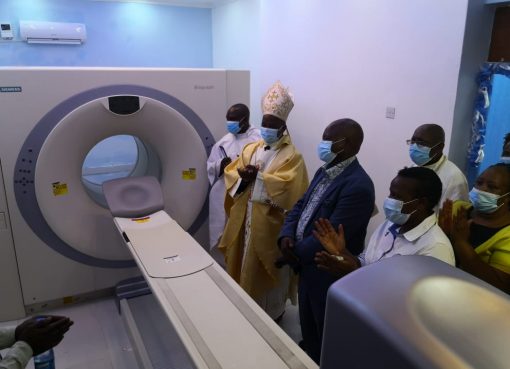Schools in Nakuru were Monday a beehive of activity as thousands of students reported for their first day in Junior Secondary schools (JSS).
Long queues started forming early hours of the morning in the schools across the county as the exercise progressed smoothly.
At Moi Primary School, 100 of the 303 Grade 6 learners who sat for their final Kenya Primary School Education Assessment (KPSEA) examination in November last year had lined up at the registration desk by 10am.
The national government directed that junior secondary be domiciled in primary schools following a recommendation by the Presidential Working Party on Education Reform.
County Director of Education Mr Fredrick Osewe said 1200 primary schools in the devolved unit had been approved as qualified to host Junior Secondary schools.
“We have advised schools that do not qualify including 171 private institutions to take their learners to the nearest Junior Secondary schools approved by the Ministry of Education. The registration exercise is progressing without hitches,” stated Mr Osewe.
According to the Director 59,795 learners from the devolved unit, out of which 50,425 were drawn from public schools and 9,370 from private institutions sat for their final assessment from November 25 to November 30 last year.
Mr Osewe who spoke at Moi Primary School when he led Ministry officials in inspecting the registration exercise added that neighbouring institutions will be required to share facilities such laboratories.
“This collaboration is to facilitate teaching of practical subjects such as integrated science, agriculture, computer science, home science, visual and performing arts,” stated the Director.
A total of 351,751 Grade Six pupils and 353,636 Standard 8 candidates sat for their final Kenya Primary School Education Assessment (KPSEA) and KCPE examinations respectively in 8,343 centres across the rift valley region. An additional 153 KCPE candidates wrote their exams from borstal institutions with 303 others sitting as private candidates.
While stating that the government was committed to achieving 100 per cent transition Mr Osewe also said schools should not direct parents where to purchase new JSS uniforms.
“No learners shall be excluded from reporting to school on Monday next week for failure to afford a school uniform,” he stated.
While the ministry has committed to disburse due capitation for the first term by the end of the month, primary schools that will host junior secondary will benefit from a Sh9.6 billion cash injection, Sh15,000 for each learner, of which Sh4, 000 will go to infrastructure development.
Osewe said the ministry shall also develop and implement a framework for sharing and management of infrastructure and human resources among JSS and other public as well as private institutions.
According to the guidelines on JSS, some of the facilities to be shared include pitches, open spaces and other relevant facilities and equipment for athletics, games, physical fitness and health.
Others include small plots or spaces for innovative agricultural practices and assorted farm tools and equipment. Computer science laboratory with adequate computer sets.
However, Education Cabinet Secretary Ezekiel Machogu said the infrastructure and resource sharing arrangements shall be implemented in accordance with existing government regulations and policies and coordinated by the county director of education.
Others include counseling rooms or space for psycho-social support and other learner support programmes, library with relevant (digital as well as physical) learning resources and home science room with provision for laundry, cooking and sewing areas/space.
In the guidelines, the ministry also detailed how learners will be assessed, including a national summative assessment administered by the Kenya National Examination Council (KNEC) at the end of Grade 9. The learners will be assessed in all the 12 core subjects and maximum two optional subjects. The assessment will be referred to as the Kenya Junior Secondary Education assessment.
At Pre-Vocational level, the assessment will be referred to as Kenya Pre-Vocational Level Education Assessment, with learners being assessed in nine subjects.
At JSS and pre-vocational level, both formative and summative assessment will be conducted. The formative assessment will be offered in the form of school-based assessments (SBAs) while the summative assessment will take the form of national assessment.
KNEC shall provide guidelines for standardized SBAs to be administered by subject teachers in Grades 7, 8 and 9. The teachers shall then score the learner’s work and provide immediate feedback to the learners. A school year report shall then be issued.
By Jane Ngugi





